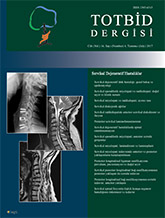
Cervical spondylotic myelopathy (CSM) is a clinical condition that manifests itself due to compression and ischemia of the spinal cord. The choice of surgical treatment for CSM remains controversial; however, most physicians agree that patients who experience symptoms for an extended period of time or progression of the disease require surgical intervention. The goal of the treatment is to decompress the spinal cord and stabilize the spine in neutral, anatomical position. Since the obstruction and compression of the cord are localized in front of the cord, it is obvious that an anterior surgical approach is the preferred one. Anterior decompression of the spinal canal plus fusion techniques for stabilization has several advantages and some disadvantages when compared to posterior options. Anterior cervical canal decompression approaches typically comprise corpectomy, and anterior cervical discectomy and fusion (ACDF). For single-level CSM, ACDF is accepted as the gold standard. In this article, different anterior surgical procedures, complications, and their outcomes are discussed.